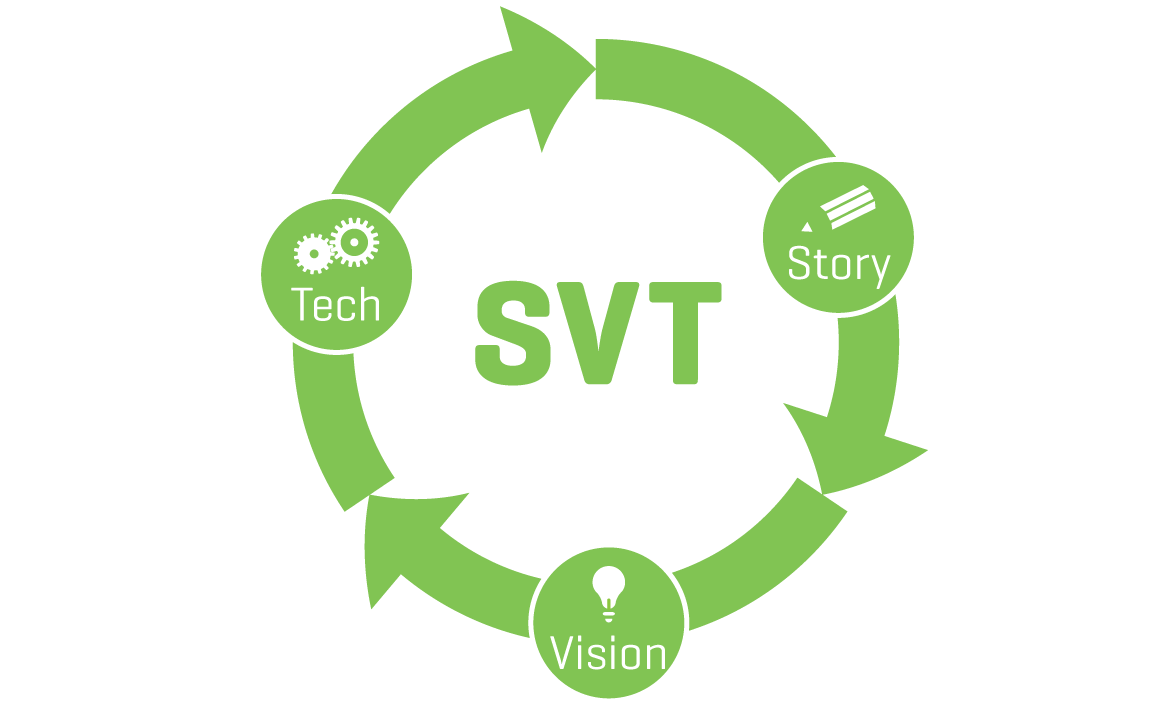


What is your story about? Who are your characters? What are their motivations? Why should your viewers care? In web-native stories and traditional stories alike, story matters!
After you have the story, think about how you’d want your user to experience that story. How do you envision a viewer interacting with your web native film? What are the unique characteristics of the web (like participation, or interactivity) that can help you tell your story more effectively? You’ll need to bring a creative vision that serves as the expression of your story.
It may help to sketch out storyboards, wireframes, or stage directions for how you want people to experience your story. Try to describe how it should work, not how you’d build it.
You shouldn’t worry too much about technology at this stage—your creative vision will determine the technical requirements. Just think big and figure out how to build it in the next step.
Once you have a story and vision, you’ll be able to investigate what kind of technology you need to make your vision come alive. The advantage of developing a vision first is that you’ll know exactly what technical challenges you’ll need to solve to make your vision work.
Everyone’s technology needs will be different. You’ll need to do some investigation around possible solutions— perhaps by searching the web, or consulting with a developer, or emailing the creator of a similar project for advice.
If you can at all avoid it, don’t waste your time writing code. The beauty of open source is that often, someone has already solved your problem. It’s much smarter to spend time repurposing and mashing together code, rather than starting from scratch.
Don’t include technical components just because they’re shiny and cool: the tech needs to serve the project’s goals.
After you’ve cycled through story, then vision, then tech—you’ll want to come back to story.
Maybe your idea of the story has changed along the way. Or maybe you think that the technology isn’t there to support your vision, and need to revisit whether this is the best story to develop for the web. Be brave and not afraid to iterate on your work — it’s part of what makes an excellent storyteller.
There are some differences between web-native storytellers and conventional storytellers. Many storytellers are afraid of showing things that are half done. Filmmakers, for instance, do a lot of iteration on their projects, but it usually happens in private—they continue to tighten their edit to test the flow, tempo, and rhythm of a certain cut. But to adapt to the web, filmmakers have to be willing to do this kind of iteration in public.
As a web-native storyteller, you’re necessarily making software. And in the software world, we like to say “if you’re not embarrassed when you ship your first version, you waited too long.”
The best way to tackle a web-native project is to release early, release often and iterate on your ideas constantly. Using a cyclical model might mean your project may never be finished, but you can be sure it will be awesome. Like Da Vinci said, “Art is never finished, it’s only abandoned.”
Start with a story—an actual story about actual people and their motivations. Then have a vision for how you can tell that story more effectively using the web. Then, and only then, figure out the specific technologies you will use to implement this vision. This way, you’ll be in a position to make technology work for you—and not be stuck asking “what can I do with technology?”